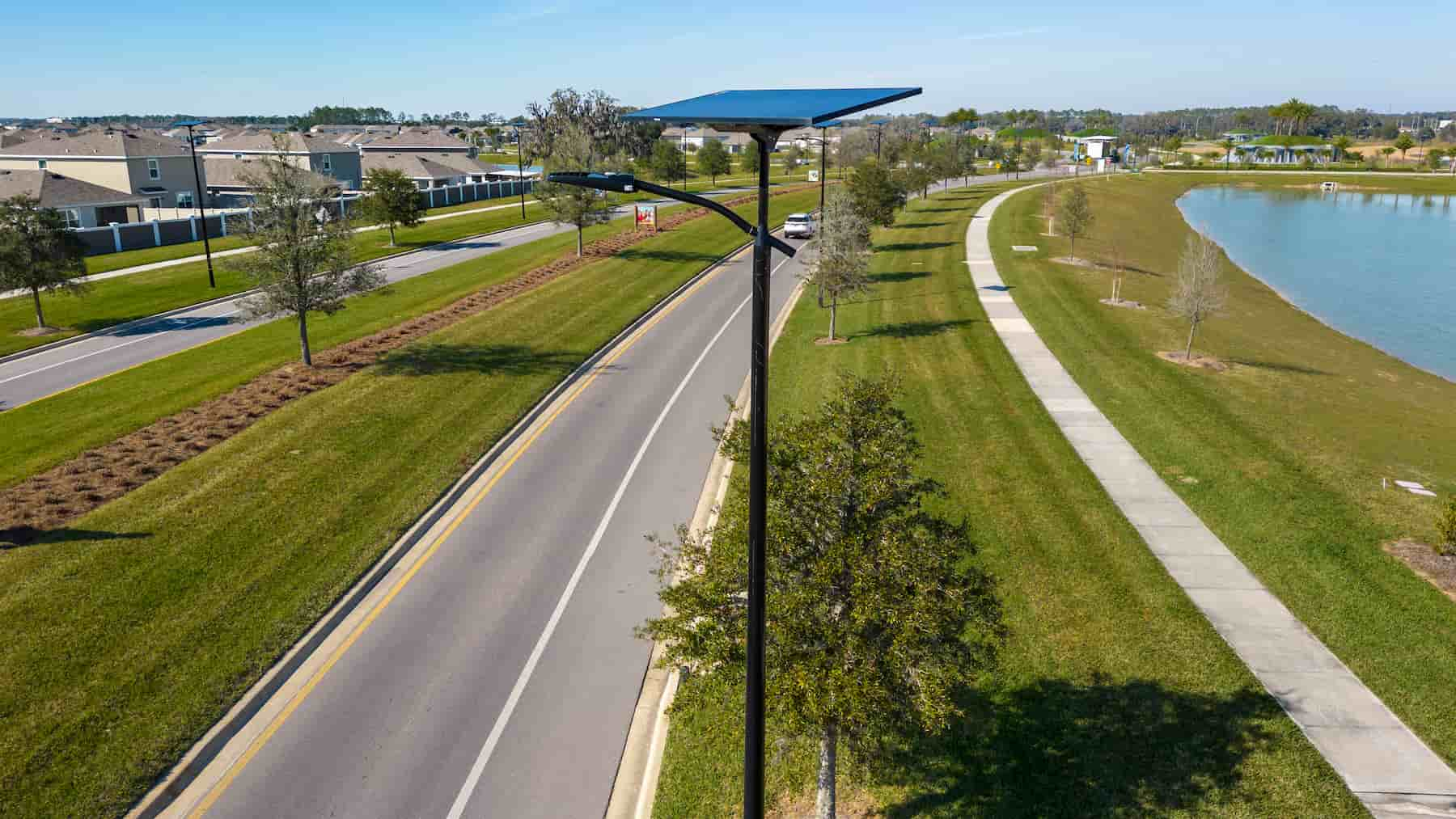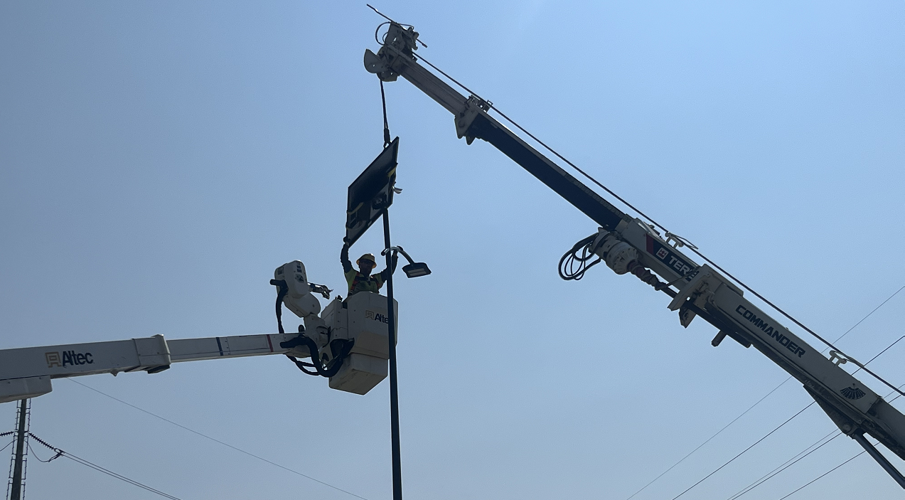Why the Pole Matters as Much as the Light
When it comes to solar parking lot lighting, most attention goes to the panel or the light fixture itself. But the pole—the part that physically holds everything up—is just as critical to long-term performance.
In fact, many solar lighting issues stem not from electronics, but from structural problems: poles that don’t meet wind load standards, fail in storms, or deteriorate in harsh climates. For commercial and municipal sites, a poorly chosen pole can shorten the life of the system, increase maintenance costs, or pose safety risks.
That’s why successful solar lighting projects are built around structural integrity as much as lighting performance. Systems like Fonroche SmartLights take this into account from the start—integrating pole strength, wind loading, battery housing, and lighting design into one durable unit built to last.
Table of Contents
What Makes a High-Performance Solar Light Pole
A solar light pole does more than support a fixture—it carries the load of an entire off-grid system. That includes the solar panel, battery storage, lighting unit, and sometimes smart controls or sensors. To perform reliably, especially in parking lots and open-area installations, the pole must be structurally engineered for the conditions it will face.
That starts with wind loading and soil compatibility. The pole must withstand storm-force winds, seasonal shifts, and in some areas, flooding or freeze-thaw cycles. Pole height and foundation depth are sized based on site-specific wind maps and geotechnical data.
Equally important is equipment integration. In systems like Fonroche SmartLights, the pole is designed to align panel angle, luminaire placement, and battery housing—minimizing failure points while maintaining a clean, compact footprint. Housing the battery above ground protects it from flooding and tampering, while maintaining airflow for thermal stability.

Why AASHTO-Standard Poles Matter for Parking Lots
In public and commercial infrastructure, lighting poles must meet more than just performance expectations—they have to meet safety codes. That’s where AASHTO standards come in.
Developed by the American Association of State Highway and Transportation Officials, AASHTO standards outline structural requirements for poles used in roadways, parking lots, and pedestrian areas. These include wind load ratings, breakaway safety features, and fatigue resistance—all critical for ensuring the pole holds up under extreme weather or accidental impact.
For solar-powered area lighting, compliance with AASHTO isn’t optional—it’s essential. Systems like Fonroche SmartLights are built using AASHTO-rated poles specifically selected for each project’s location and exposure. That means factoring in local wind zones, mounting heights, and soil conditions to ensure long-term structural integrity.
Whether installed at a transit center, city park, or commercial site, poles must be designed to perform safely under pressure, not just stand upright on a clear day.
How Fixture Design Affects Coverage and Uniformity
In parking lots, the quality of light matters as much as the quantity. The right fixture ensures consistent visibility, minimal glare, and safe navigation for drivers and pedestrians alike. That’s why beam spread, optics, and mounting height are critical factors when selecting solar-powered area lighting.
Well-designed fixtures distribute light uniformly across the pavement, not just directly beneath the pole. Light should be bright enough to deter crime and improve safety—but not so intense that it causes glare or light trespass. Most parking lot solar LED lights range from 5,000 to 20,000 lumens, depending on site size and spacing.
Fonroche SmartLights use engineered LED optics paired with the right pole height and spacing to deliver even light distribution across commercial and municipal lots. Whether it’s a wide-open transit hub or a narrow urban site, fixture selection is matched to the lot’s layout—ensuring coverage where it’s needed without waste or shadowing.
Why Pole-Integrated Systems Simplify Installation
Solar lighting is often chosen for its speed and simplicity—but not all systems are equally streamlined. Many off-the-shelf solutions require coordinating separate components: poles, panels, batteries, fixtures, brackets, and foundations. Each added part introduces more time, more complexity, and more chances for something to go wrong.
Pole-integrated systems take a different approach. By combining the solar panel, battery, fixture, and mounting hardware into one engineered unit, installation becomes faster and more reliable. There’s no need for trenching, wiring, or piecing together mismatched parts.
Fonroche SmartLights are fully integrated at the pole level—designed as a unified system rather than assembled in the field. This reduces on-site labor, limits installation error, and improves long-term system performance. It also creates a cleaner visual profile, which is increasingly important in parks, campuses, and commercial developments where aesthetics and public space quality matter.

Build for the Long Term
The performance of a solar lighting system depends on more than just panel and fixture specs. Poles—often overlooked—play a central role in structural stability, light quality, and system longevity. For public and commercial parking lots, choosing the right pole and fixture isn’t just a technical decision—it’s an investment in safety, resilience, and total cost of ownership.
Fonroche SmartLights combine engineered poles, high-efficiency optics, and smart energy management in one fully integrated system—designed to meet real-world conditions from day one. Let’s build a system that’s structurally sound and lighting-ready, today.

